The Blue Walking Tour: 7 kilometres of wonders
The “Sendero Azul” of Las Palmas de Gran Canaria is a live tour around the geology and history of Las Canteras and El Confital.
Open your eyes wide. The ocean spreads out at your feet, hugging a promising coastline where sands, reefs, rocks and in the distance, the volcanoes, all converge. Breathe a deep breath and let the sea breeze overpower you. Just let yourself go and walk on. Don’t miss a single detail. The Blue Walking Tour along the Bay of El Confital and Las Canteras Beach, here in Las Palmas de Gran Canaria, offers plenty of surprises along a seven kilometre stretch of wonders. The information boards will help you understand the geology, biology and the historical evolution of this outstanding landscape.
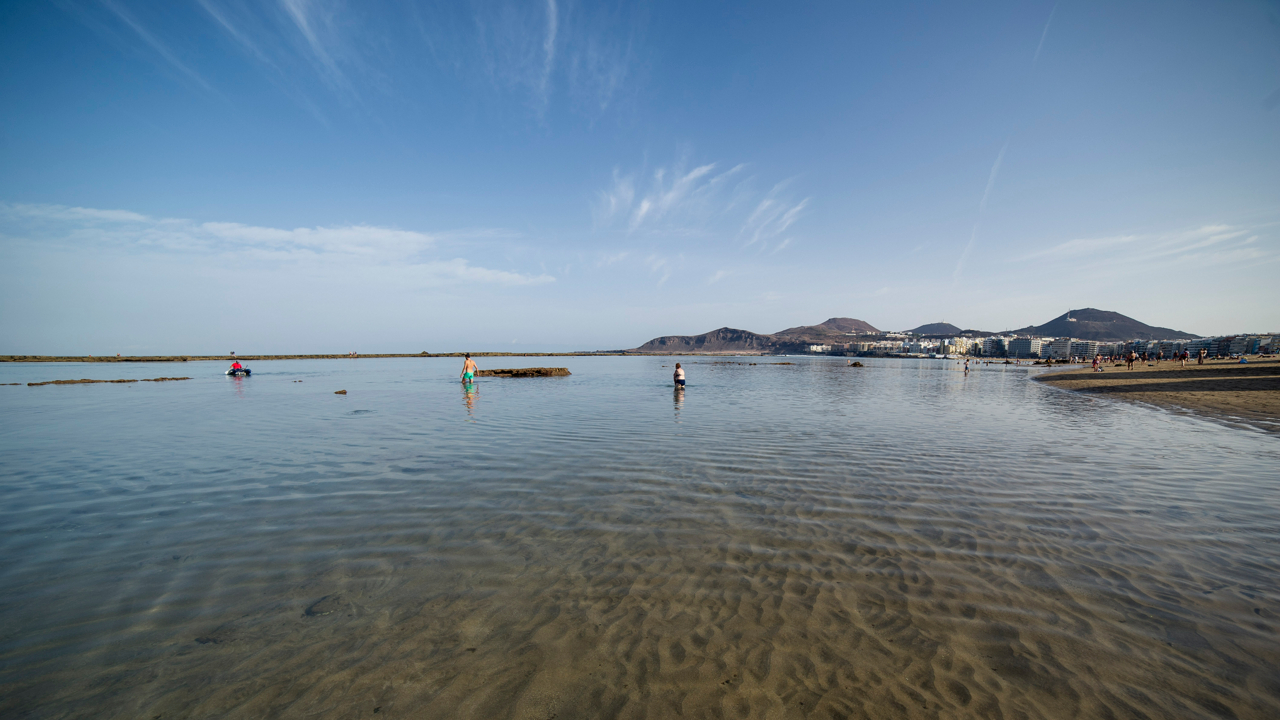
Behind us stands the sculpture called ‘El Atlante’, by artist Tony Gallardo, measuring nearly nine metres high, built with lava stones, and declared an Asset of Cultural Interest (BIC in Spanish). One of the first things you will see, if you start your route from the area of El Rincón, is the enigmatic imprint of time hewn out of the rock. The cliffs to your right highlight the trace of the volcanic flow that gave rise to the Roque Nublo, painted in black. It also bears witness to the extraordinary elevation of the sea –around a hundred metres- which occurred over four million years ago and which left a fine yellow mark.
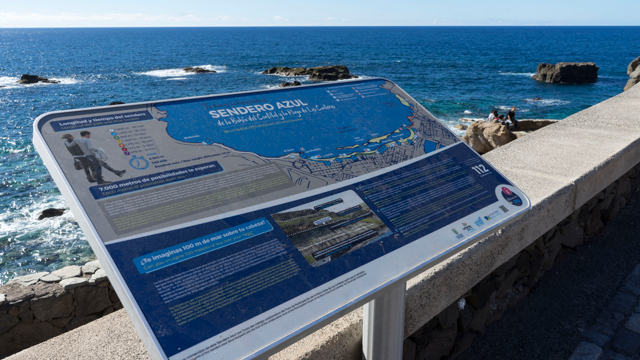
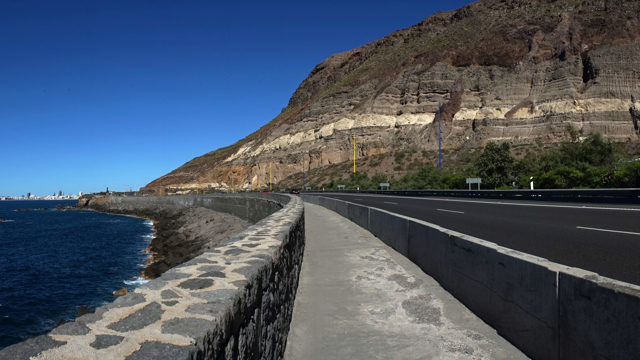
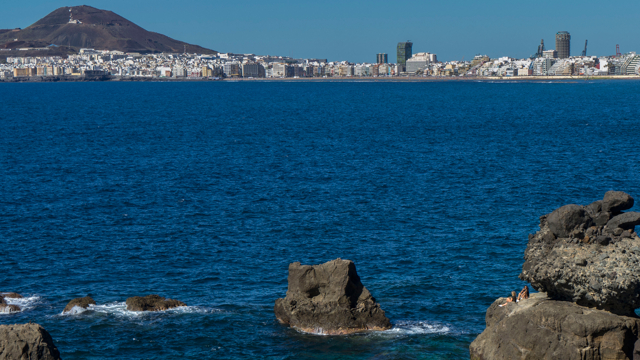
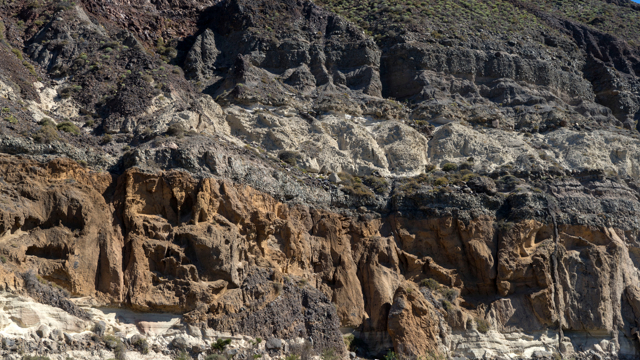
Something grabs your attention. Dozens of figures on surfboards are gliding over the waves that roll into the shore, showing what a hotspot the city’s bay has become for avid surfers. Pioneer Ulises Betancor used to make his own surfboard in the 1970s, and at his workshop he set off a whole generation of sea-surfing enthusiasts. Today there are many surfing schools and centres that feed the excitement of visitors who pour in from a wide range of countries.
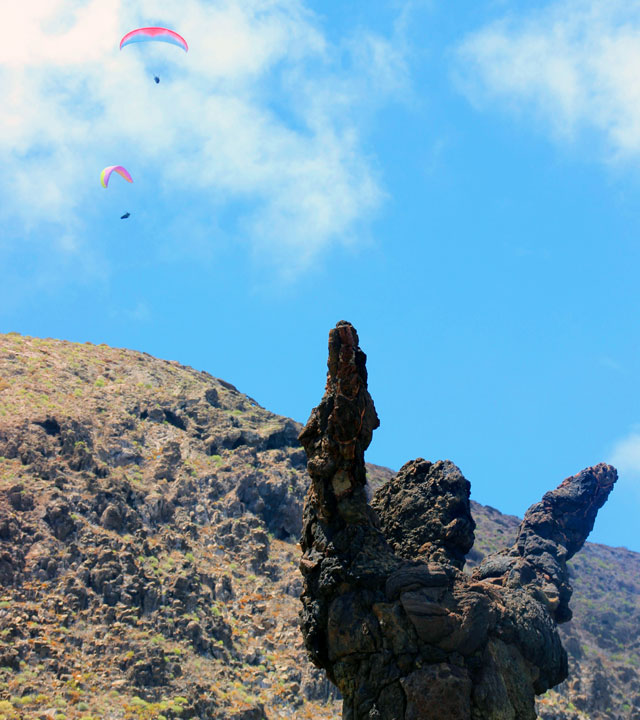
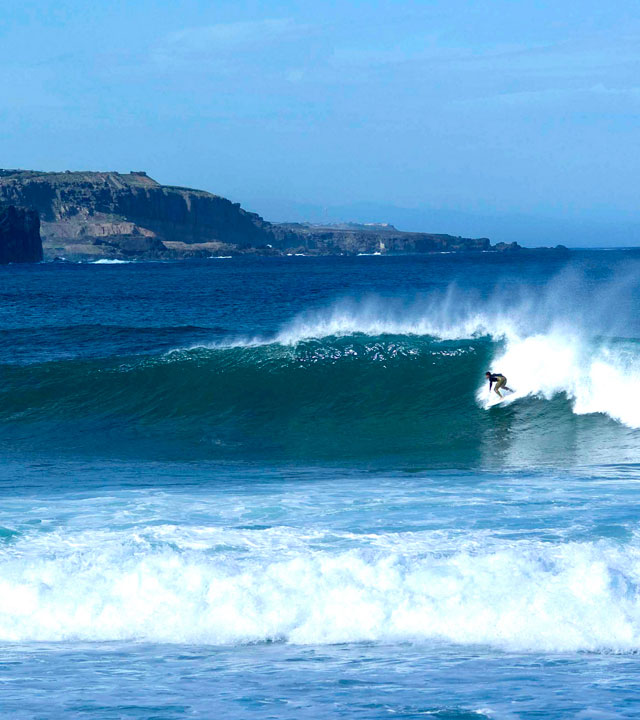
Once we have passed the Alfredo Kraus Auditorium, and from the point at which the sculpture that pays tribute to the famous Gran Canarian tenor rises up and seems to be singing out to the Atlantic, the sandy kingdom stretches out in front of us. This loud and vibrant end of the bay goes by the name of La Cícer, in memory of the the German colonial electric company Compañía Insular Colonial Electricidad y Riesgos SA. The darker tones of this area of sand are a product of the erosion of the volcanic rock, while the lighter, golden tones are derived from the remains of shells, fish bones and the many age-old structures of other organisms.
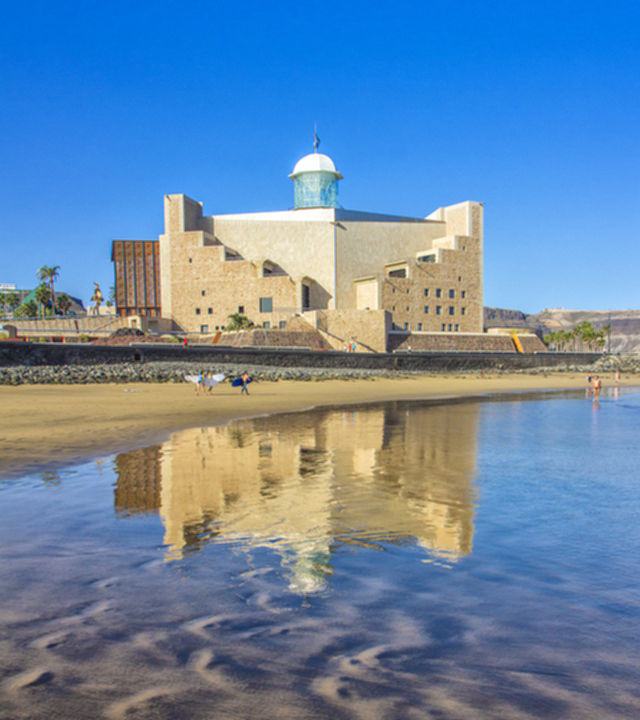
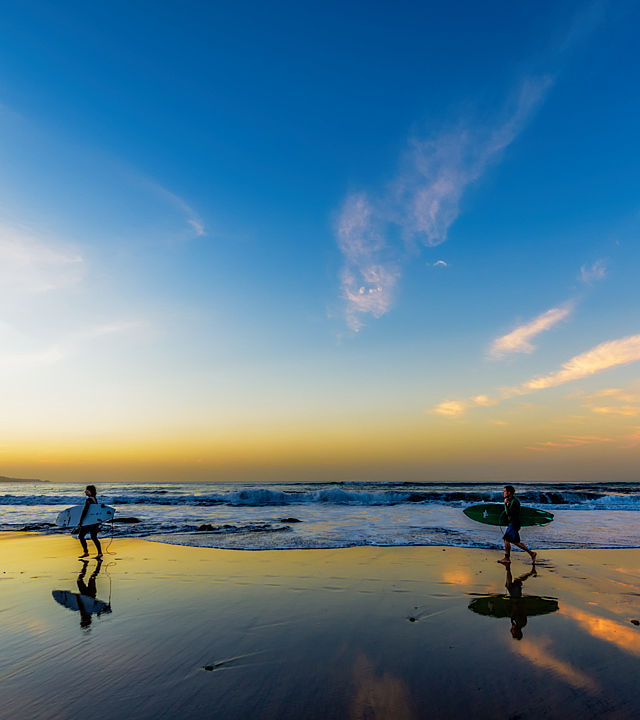
Walking is not the only choice on offer at the Blue Walking Tour. Goggles and a snorkel can give anyone who knows how to swim the chance to view the fascinating underwater world of Las Canteras and El Confital, while there are companies who offer wetsuits. As one of the information boards points out, one of the particular traits of this marine area is that in a very limited space, there are a wide variety of environments, creating both a semi-submerged and fully submerged universe comprising sand banks, reefs, sea caves, algae sea beds, and lastly open water areas, providing an endless, blue home for dolphins, whales and sea turtles.
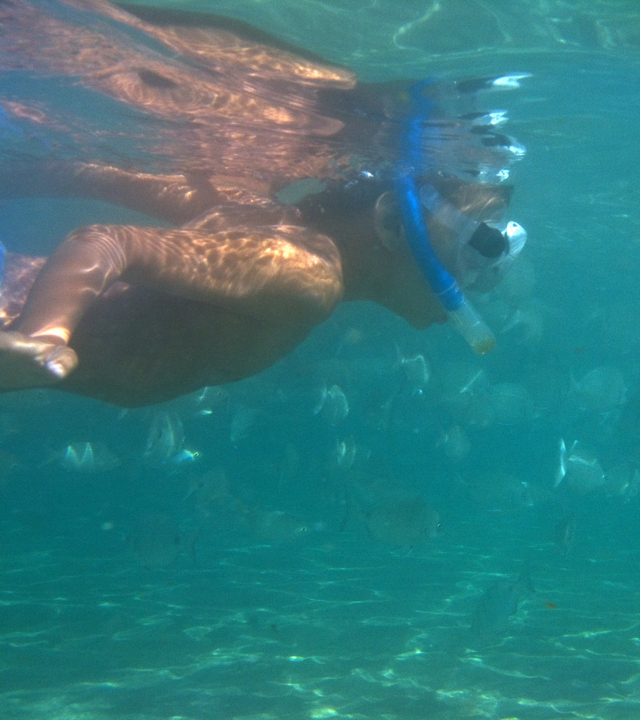
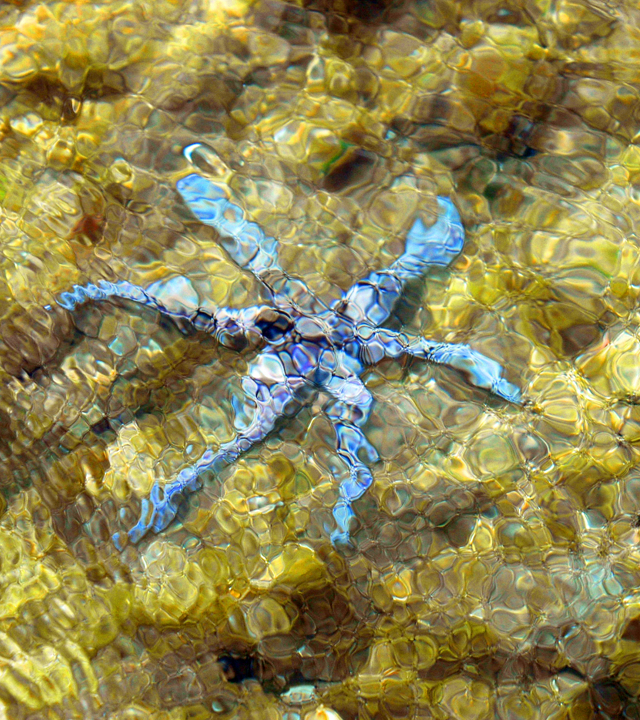
The Sendero Azul also features in the coastline where the 1956 film ‘Moby Dick’ was made, directed by John Houston, and starring Gregory Peck in the role of captain Ahab. Carpenters from the shore of Las Palmas de Gran Canaria put together a full-size replica of a whale for it, and as is explained, sperm whales have been known to frequent the surrounding area of La Isleta for thousands of years. Indeed, the whole of the way along the Sendero Azul seems just like film set…
Life itself is just like a part of the sea, as it moves in waves along the Paseo de Las Canteras, swaying from side to side, as far as the lively area of La Puntilla, as we make our way into the heart of the Bay of El Confital and the Marine Area of La Isleta, both of these integrated into the Natura 2000 Network due to their enormous biodiversity and the need for them to be protected.
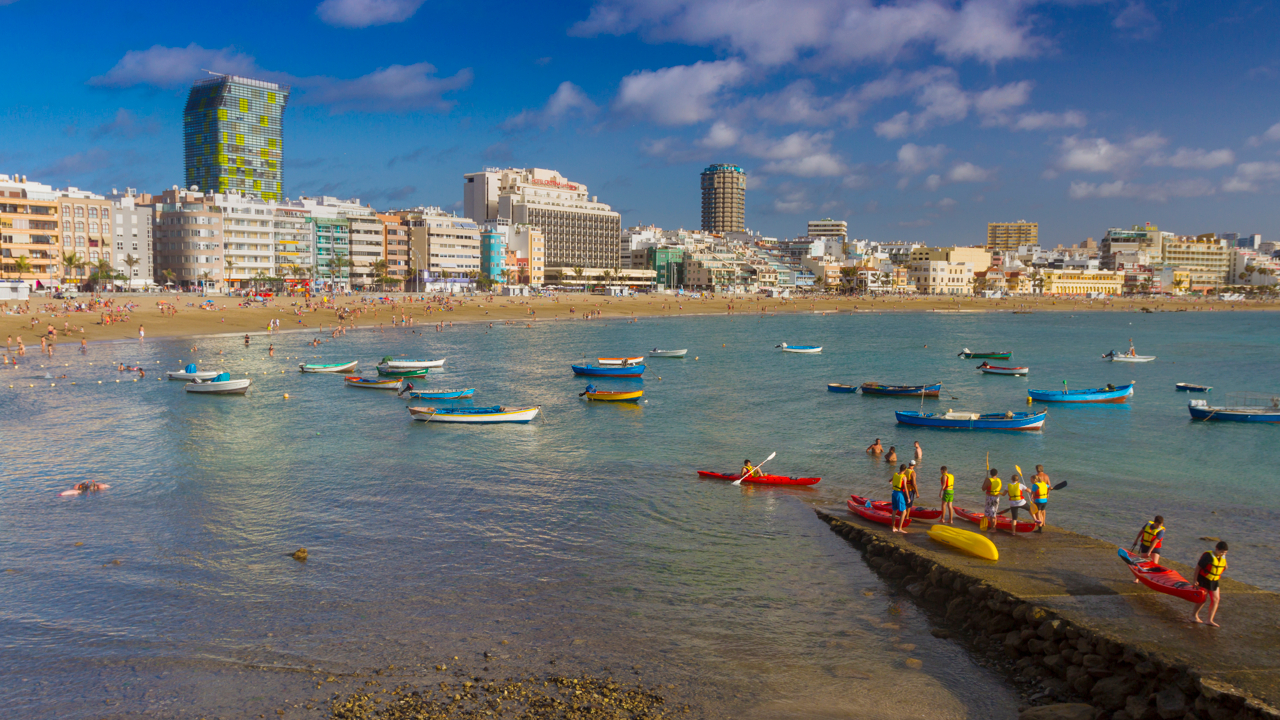
Step by step and with a surprise at every turn we come to El Confital, the name for which is down to the accumulation of little rocks produced by a type of reddy coral scientifically known as rodolitos. When it dies, the algae sheds its reddy colour and becomes whiter, and because of its spherical appearance, it is reminiscent of baked pastries. This is the sweetest side to this otherwise salty world, which from this point on, keeps us sheltered in a volcanic shade.
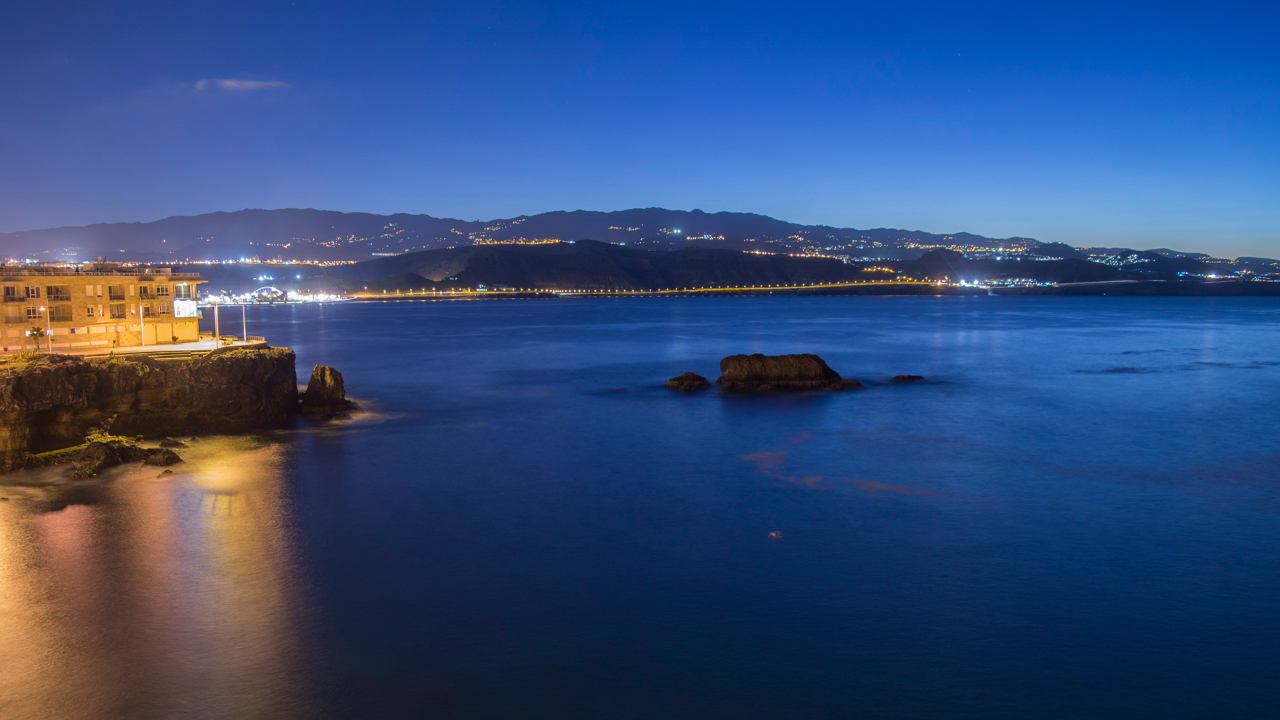
At the other end, at the start of the blue walking route, it was the land that was talking to us. Now it is the ancient dwellers of the area who do so. The Cuevas de los Canarios, a group of caves situated on the upper part of the mountain of El Confital, were an aboriginal settlement, the root of human civilization that evolved over the centuries, shaped by the avatars of history and urban evolution, and which also became fish factories, defensive structures, and salt mines.
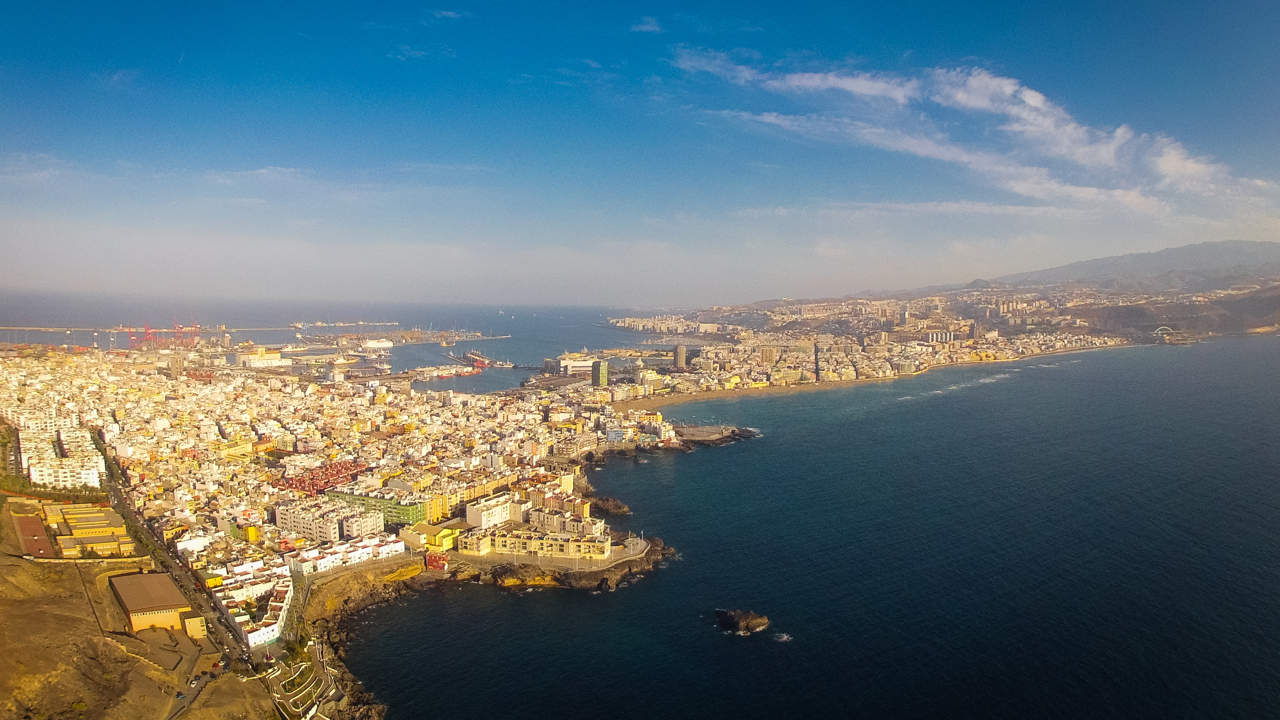
Other inhabitants at the natural sea water ponds include starfish, little pensive fish called ‘cabosos’ and scurrying hermit crabs. Surfers seem to be floating around like sharks and dolphins, waiting for that perfect wave. Seven kilometres further on the steep cliffs talk of a long-distant past in their own silent sign language. Back here, however, it is all about the here and now.

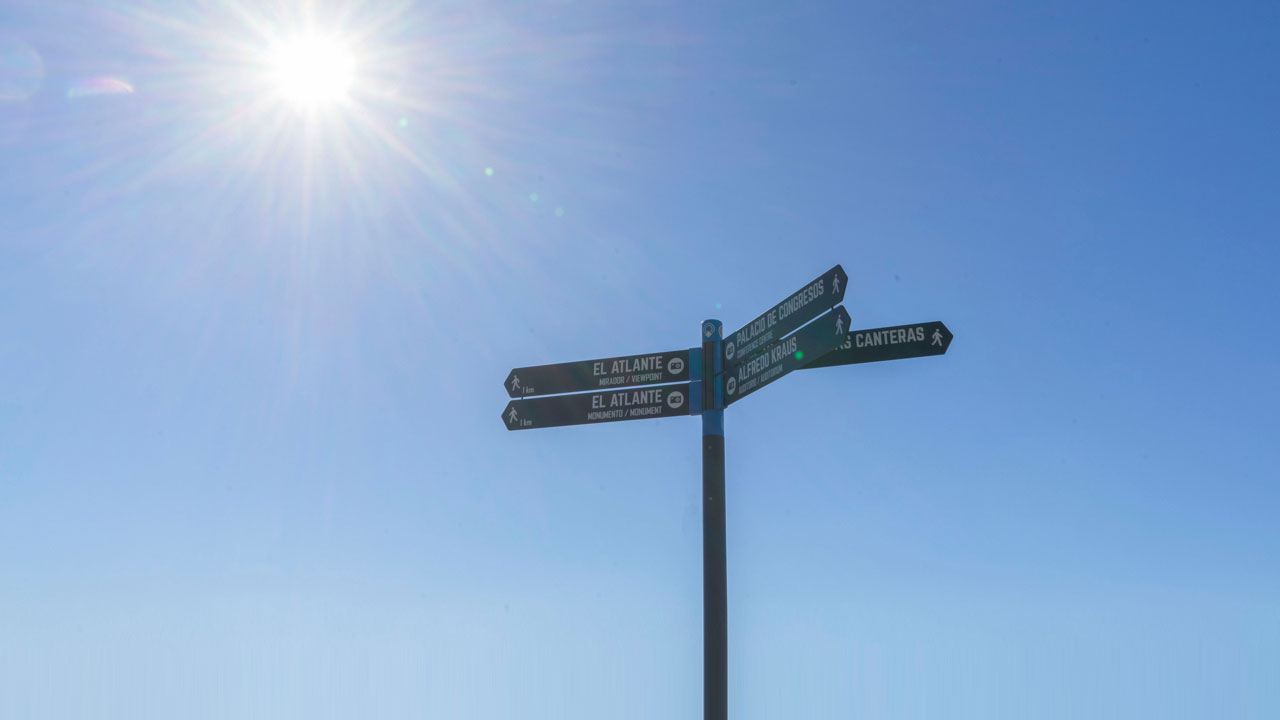

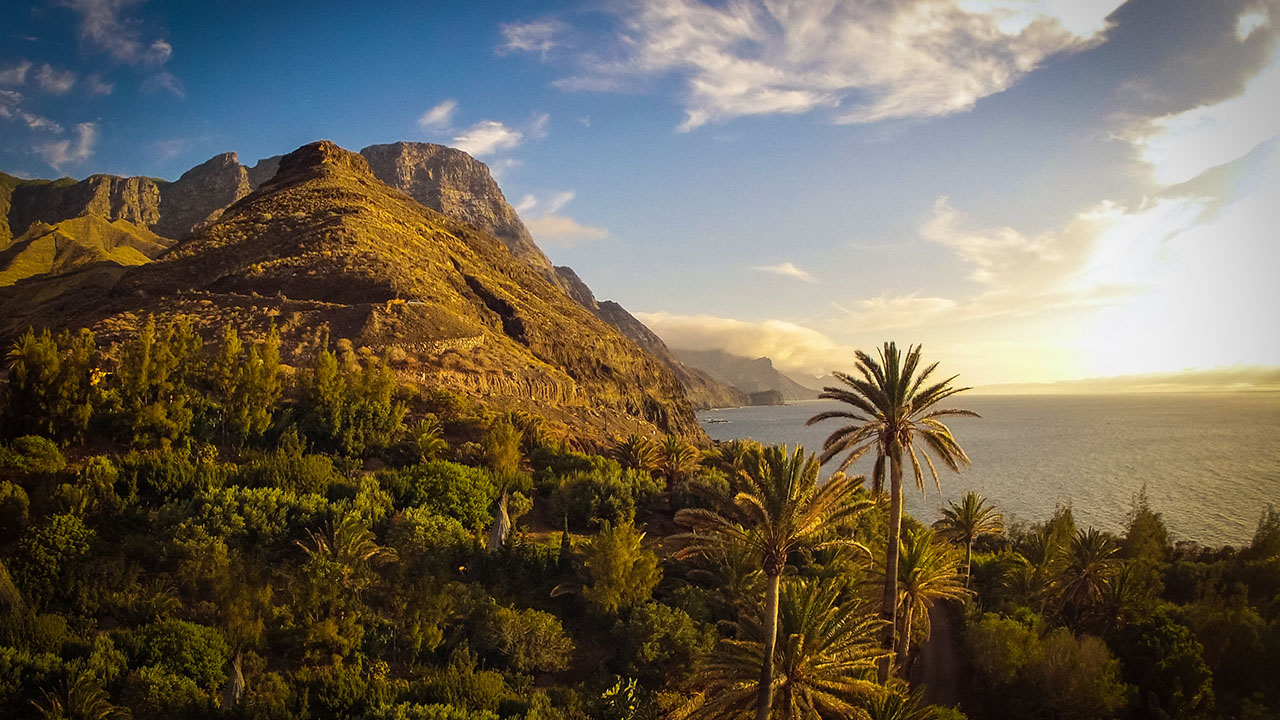
Comments are disabled for this post.